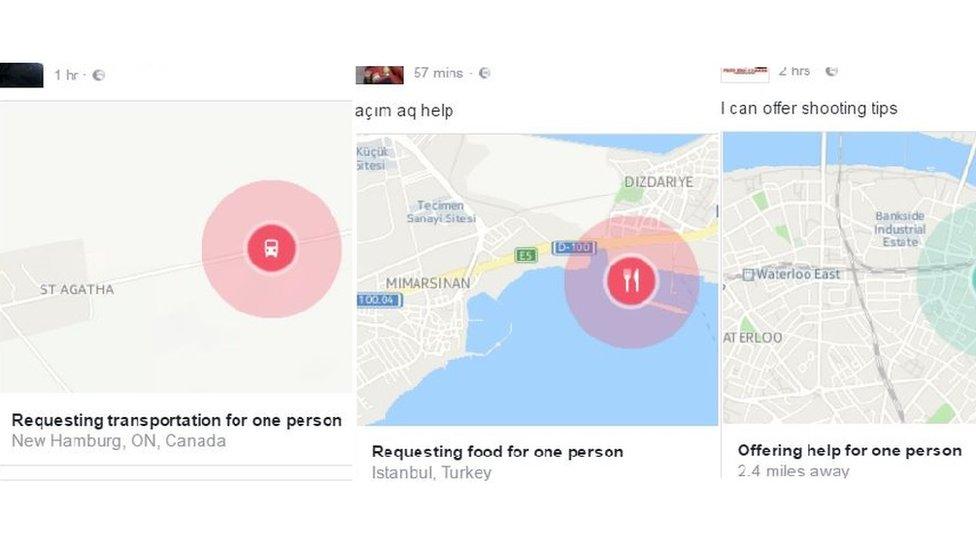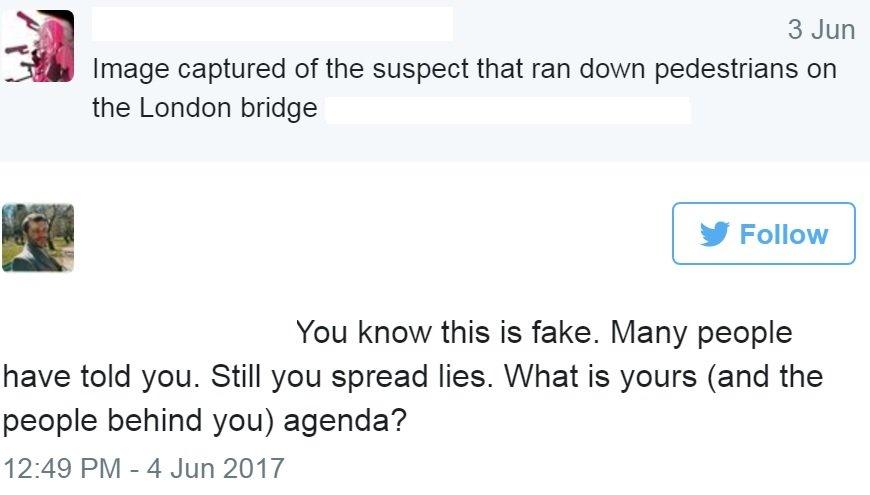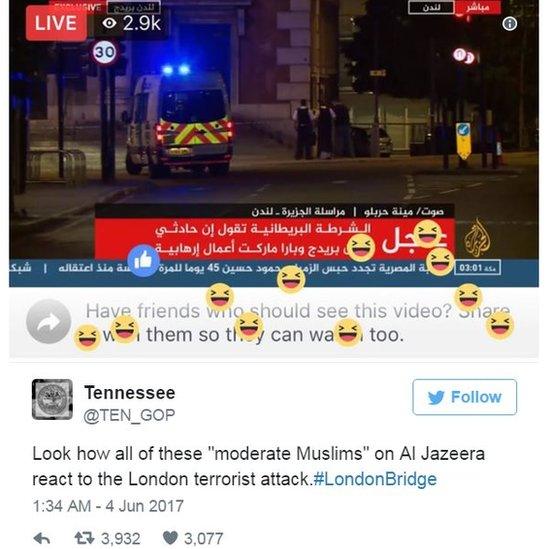Misinformation and fake photos shared after London attack
- Published

An image circulated on Twitter claimed David Sherratt was "missing" after the London attack when he was in fact in Cardiff
Fake stories, images and misinformation have been circulating on Twitter in the days following the attack on London Bridge.
It's not a new phenomenon, but does seem to be a growing trend, as fake images also circulated online in the aftermath of the Manchester attack last month.
Seven people were killed and 48 injured when three attackers drove a van into pedestrians and stabbed several in Borough Market on Saturday night.
Soon after the news broke images of the "missing" started circulating.
1. The fake "missing images"
Among the many false missing images shared online was that of David Sherratt, external. A Twitter user unknown to David shared his image claiming he was his "missing brother" and appealed for retweets.
David, 20, is based in Cardiff and runs a YouTube page called Alternative Facts, external. He says he hadn't been to London in months and was only alerted to the tweet by a follower.
David told BBC that he was concerned "people were going to waste resources looking for me instead of actual victims".
Many YouTubers were also victims of fake missing tweets, including US-based Jacob Sartorius, external, with one user claiming he was their child. The Twitter account responsible for that post has since been taken down.

Other YouTubers whose images were posted with claims they were some of the missing include MattyBraps, external, Vinny (Vinesauce, external), and Devon Sweeney, external.
Another user tweeted a photo of Infowars editor Paul Joseph Watson, external, claiming he was worried about "his boyfriend who hasn't returned my calls".
The BBC spoke to one of those sharing the fake tweets who told us his aim was to "see if people would pick up on it".
While a 17-year-old from Pennsylvania, US responsible for another fake tweet said the tweet was a "public service" because it made "people [retweeting it] feel good about themselves".
*We have chosen not to include some of the images and profiles of accounts circulating fake images to prevent the spread of misinformation*
2. Facebook Safety Check misused and abused

Shortly after the attack, many Facebook users in London used the Safety Check, external feature to reassure family and friends they were ok.
But the tool was also misused by users who requested food or transportation despite being located outside the UK.
Others used it to share Islamophobic messages.
You might also like:
Meanwhile, people who weren't located in the area also used the feature to offer their assistance.
One Facebook user living in Wales volunteered, external to host a family affected by the attack for a weekend while another extended, external her "time and support" and a listening ear in addition to material help.
3. The fake suspect

Other online trolls shared a photo supposedly showing the "suspect that ran down pedestrians on London Bridge".
The man in the image was identified as US comedian Sam Hyde, external
Hyde has been wrongly accused by online trolls of perpetrating a wide range of mass shootings and attacks in the United States.
Users on the social network 4chan have helped perpetuate, external that narrative.
4. And the "laughing moderate Muslims" return

The alt-right Twitter account Tennessee tweeted, external a screen grab from a live broadcast on Al-Jazeera's Facebook page which it suggested showed "moderate Muslims" laughing at the attack.
A similar image was also spread online following the Westminster attack in March, and from an Al-Jazeera live Facebook video.
The video, external in question, screen grabbed from Al-Jazeera's page, appears to show a relatively low number of people reacted with a laughing emoji with many more people adding the crying and angry emojis to the stream.
It's also difficult to ascertain the religion and nationality of all the users who reacted to the post from their Facebook profiles.
By the UGC and Social News team; Additional reporting by Mike Wendling